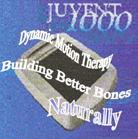
THE Railway Procurement Agency (RPA) has insisted it did not spend €180,000 on a
controversial report that found a new Luas line was economically unviable.
The Department of Transport said the massive sum had accrued in "preparing the feasibility study" on a light rail track from Rathfarnham and Terenure to Dublin's city centre.
However, the RPA said the money had been spent on a major public consultation in which thousands of local residents were asked for their views.
The controversial resulting report states that the proposed Luas Line E will not pay its way – and instead could lose in the region of €2m a year.
The study also highlights significant costs in developing the tram line, including the purchase of dozens of properties and gardens along the route.
The Department of Transport said: "In May 2008, the RPA published its feasibility study on a possible Luas line connecting
Dundrum to the city centre via
Rathfarnham, Terenure and Harold's Cross (known as Line E).
"[It is understood] from the RPA that the cost of the work to date in preparing the feasibility study is approximately €180,000.
"The report is only a first step in a process of assessing whether or not the development of a Luas line serving the specified areas ought to be pursued."
However, RPA spokesman Tom Manning said it was not a case of merely spending the €180,000 fee on the report.
He said: "That includes the public consultation and we have consulted widely with a large number of people in the area and local representatives.
"It represents very good value for money and we are continuing to examine the responses so it is not just a case of the money being spent on a document.
"A report like this is out there to get a response and we have had some very interesting responses. We will be meeting local representatives in the coming weeks and are hoping to give them an indication of where we are going with this."
Critics of the proposed tram route believe it was always unlikely that Luas Line E would be built and that the feasibility study was carried out to placate local interest groups.
The report specifies a number of
difficulties with any planned routing for the tram and the fact that its catchment area overlaps the two other Luas lines in Dublin.
It says: "Substantial property acquisition would be required involving approximately 10 buildings and 150 gardens and shared running [single lane of track] would be necessary in places.
"In order to make the line feasible through Terenure, a loop arrangement proved to be the most reasonable option, thereby mitigating the negative effects of prolonged shared running along the heavily trafficked N81.
"The section between Broadstone and Christchurch presented a number of
engineering difficulties including insufficient vertical clearance at Christchurch Arch, the structural insufficiency of O'Donovan Rossa Bridge and the gradient of Winetavern Street.
"For this reason the study concluded that the most feasible alignment would terminate in the city centre at Christchurch."
But if Luas Line E went ahead under this plan, it would replicate the existing problem of tram lines which do not intersect.
The report adds: "The main issues identified during the study which might
influence a determination in relation to
feasibility are as follows: the negative impact to road users, objections relating to the necessity to acquire property, local objections from
residents, operating costs – the project falls short of covering its operating costs by
approximately €2m per year."




 del.icio.us
del.icio.us digg
digg Facebook
Facebook







